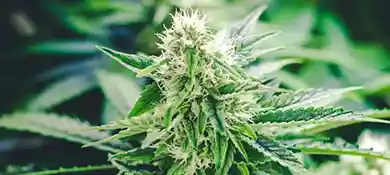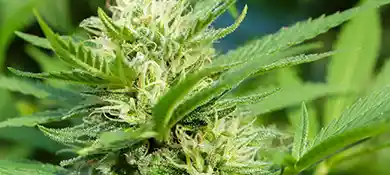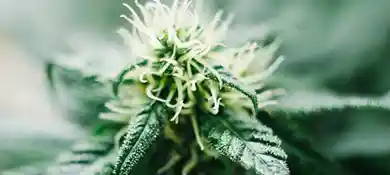Unlocking the Secrets of Cooling Greenhouse: Keep Your Plants Thriving!
In plant cultivation, the intricate dance between temperature and growth is a pivotal symphony that orchestrates the life cycle of every plant residing in a greenhouse. Having a cooled greenhouse is not a mere convenience; it's an essential thread in the fabric of successful horticulture. This piece will provide a journey through the vital necessity of cooling within greenhouses. It will explore how this component is critical in bringing out the best in your plants, enabling them to flourish and yield abundantly.
Navigating through this exploration, we will unveil the multifaceted impacts of adequate cooling, shedding light on its role in sustaining plant metabolism and enhancing overall yields. We'll traverse the realms of temperature science, exploring the harmony between optimal conditions and plant vitality and illuminating how the lessons from the past shape our approach to contemporary cooling needs. The discourse will extend to innovative solutions, ecological systems, and the convergence of technology and nature, revealing profound and actionable insights.
Embark on this enlightening exploration, where each insight will be a stepping stone to a deeper understanding of greenhouse cooling. We aim to weave together knowledge, experience, and innovation to present a tapestry of strategies and insights, all converging to a singular goal: creating environments where every plant can embrace its full potential, growing to survive and thrive.
Understanding the Need for Cooling Greenhouse
Creating a cooling greenhouse is more than a technical task—laying down the foundation for plants to live and breathe, to grow unhindered by the relentless heat of their surroundings.
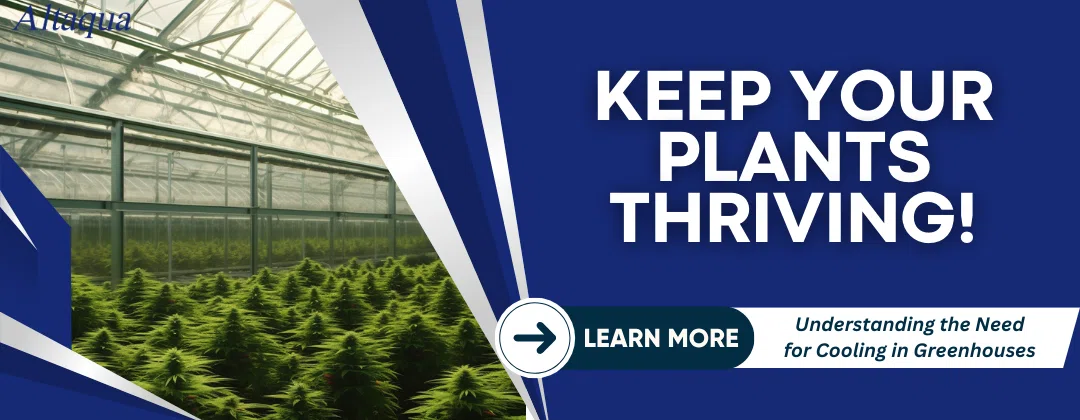
Why You Need to Keep Your Greenhouse Cool
Keeping the internal environment of a greenhouse cool is fundamental—it's about fostering a space where plants can flourish without the constant threat of overheating. When plants can breathe easily, free from excessive heat stress, they will grow stronger, healthier, and yield better. Plant heat stress can distort their natural growth patterns, compromising quantity and quality.
Crafting a cool and comfortable greenhouse requires consideration of the unique needs of the plants within, coupled with the geographical and climatic nuances of the location. It goes beyond just assembling a system; it's about empathetically tuning in to the living beings inside and creating an environment where they can thrive and prosper.
Impact of Temperature on Plant Metabolism
Temperature and plant metabolism share a delicate, intertwined relationship. Elevated temperatures throw the intricate balance of biochemical reactions within plant cells into disarray, leading to heightened stress and disrupted growth. Understanding this dynamic is crucial, helping create the right environment for plants, where each metabolic process can occur in balance, sustaining the plant's life and vitality.
Delving into plant metabolism and temperature details allows a more nuanced approach to creating the right growing conditions. This nuanced understanding, this gentle touch with the living organisms, helps optimize the greenhouse's internal environment, letting each plant find its rhythm balance and thrive in its full vitality.
External Factors Influencing Greenhouse Temperatures
The environment surrounding the greenhouse whispers its influences into the internal space, with each element—be it sunlight, wind, or ambient temperature—leaving its imprint. Understanding and respecting these silent whispers of nature enable crafting a stable, nourishing habitat within the greenhouse, fostering the growth of varied plant species.
A sensitive approach to the influences of nature—recognizing their importance and responding appropriately—helps maintain a harmonic internal environment conducive to the growth and prosperity of the plants within. It's about listening to the subtle dialogues of the environment responding with care and consideration, to maintain a space where plants can breathe, grow, and flourish.
Grasping the essence of cooling in greenhouses is not merely technical; it's about understanding the silent needs and whispers of the living entities within, crafting a space where they can breathe and flourish freely. It's a delicate dance of maintaining balance, respecting the individual needs of each species, and shielding them from the harsh elements of the external world. This gentle, informed approach to temperature and environmental balance transforms a greenhouse into a sanctuary of life and growth.
Deciphering the Science of Temperature
A meticulous comprehension of temperature dynamics is essential in managing greenhouse environments, establishing a synergy between scientific principles and practical applications to optimize plant growth and development.
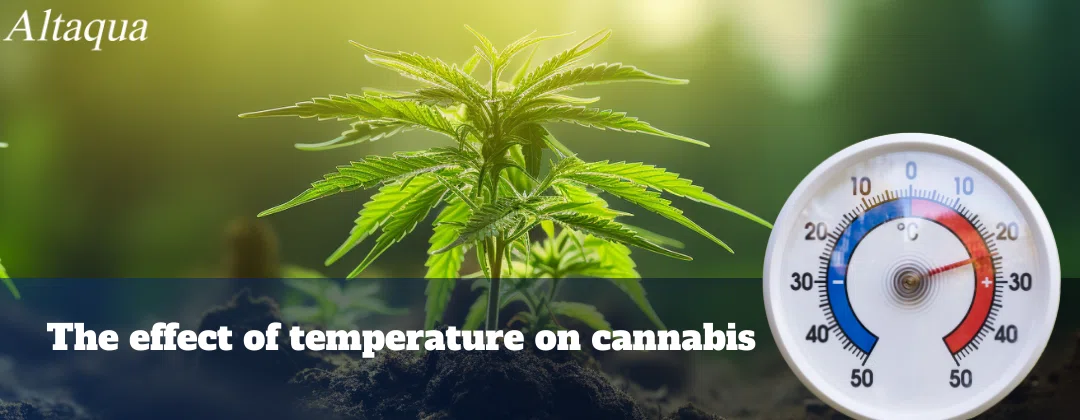
What Temperature Is Too High for Your Greenhouse?
Recognizing the upper limits of temperature within a greenhouse is crucial, serving as an interpretation of plant behavioral patterns and physiological responses to thermal stress. Elevated temperatures can initiate a cascade of detrimental physiological responses, impacting cellular functions and leading to inhibited growth and diminished yields. For each species, there is an optimal temperature range, and surpassing this can result in thermally induced stress, compromising plant vitality and productivity.
Implementing preventive measures and maintaining temperatures beneath these critical thresholds requires a thorough understanding of plant thermotolerance and precise environmental control. This is not merely adherence to protocol but a nuanced endeavor to maintain an equilibrium within the microenvironment, ensuring the physiological well-being of each plant and allowing them to thrive in a stable, conducive environment.
What's a Aood Temperature Inside a Greenhouse?
Establishing the optimal temperature range within a greenhouse is pivotal, requiring a balanced amalgamation of environmental variables to align with the physiological needs of the housed flora. It necessitates the creation of a harmonious microclimate where the metabolic activities of each plant are in sync with the ambient conditions, providing a conducive atmosphere for growth and developmental processes.
Maintaining such environmental harmony is a detailed orchestration of multiple variables, an ongoing dialogue between ecological conditions and plant needs, ensuring a supportive atmosphere attuned to each species' silent, inherent needs, enabling them to express their full biological potential.
Historical Data and Its Impact on Current Cooling Needs
Analyzing historical data is akin to traversing through ecological timelines, providing valuable insights into plant species' adaptive responses and evolving needs over time. It serves as a reservoir of knowledge, reflecting the dynamic interplay between environmental variables and plant responses, guiding contemporary horticultural practices to align with the accumulated wisdom of past interactions.
The integration of past learnings is instrumental in sculpting present-day practices. It's a compilation of ecological narratives depicting the intricate relationships between flora and their surroundings, offering refined insights that aid in enhancing current greenhouse management strategies ensuring the alignment of environmental conditions with the physiological needs of each species within the modern greenhouse.
Unraveling the temperature science within greenhouses is a sophisticated endeavor, blending scientific acumen with practical insight to establish environments where plants can thrive. It's a multidimensional approach involving a precise alignment of environmental conditions with plant physiology, ensuring the optimization of growth parameters. By interpreting the intricate languages of plants and applying the learnings from historical data, we can refine our practices, developing environments that are harmonious sanctuaries for plants, allowing them to grow, design, and yield in sync with their inherent biological rhythms.
Advanced Summer Cooling Solutions
When we deepen our exploration into the balance of temperature within greenhouse environments, the importance of advanced, innovative cooling solutions comes to the forefront. These solutions, deeply rooted in both practical understanding and scientific knowledge, ensure that every plant within cooling greenhouses finds its ideal conditions to thrive and flourish.
The Role of Ventilation in Temperature Regulation
Ventilation is the silent guardian of a balanced greenhouse, a subtle force maintaining the right blend of air inside, critical for the plants' breathing and metabolic activities. It's not just about letting air in and out; it's about sustaining an environment where life processes like photosynthesis can occur unimpeded and plants can reach their full growth potential.
We prevent the pitfalls of excess humidity and stifling heat through adequate ventilation, creating a space where plants can breathe freely, live stress-free, and grow abundantly. It's not just about following a method; it's truly caring for a place where each leaf and every bud can breathe freely and develop naturally, untouched by the challenges of a restrictive environment.
The Magic of Evaporative Cooling
Evaporative cooling is like the subtle breath of nature, a method using the natural transformation of water into vapor to cool the surroundings. It's more than a cooling mechanism; it's a harmonious interaction of elements that brings a refreshing breath to the greenhouse, balancing the internal ambiance.
Applying evaporative cooling is akin to invoking the calming whispers of nature within the greenhouse walls, a gentle embrace of air and water working together to maintain stability and balance. It's not just about cooling; it's about creating a sanctuary where every plant can live its essence, experience growth, and express its vitality in a refreshed, harmonious atmosphere.
Importance of Hydration in High-Temperature Conditions
Proper hydration in the greenhouse is like the silent song of life, essential for maintaining the vibrancy and vitality of each plant, especially when the temperatures soar. It's more than quenching thirst; it's about sustaining each plant's essence and spirit, preventing the silent screams of dehydration, and maintaining the delicate balance of life processes.
Ensuring that each plant receives its share of life essence is crucial; it's about caring for the silent whispers of leaves and the subtle breaths of roots, allowing them to continue their dance of life and growth. It's about sustaining life, keeping the delicate harmony of existence intact, and letting every plant sing its song of life in its fullest, most vibrant tone.
Advanced cooling solutions are our answer to maintaining the delicate balance of life within cooling greenhouses. Whether it's the subtle breaths of ventilation, the calming whispers of evaporative cooling, or the silent songs of proper hydration, each aspect comes together to create a symphony of balance, harmony, and life. It's our way of crafting sanctuaries where every plant can live its truth, grow its essence, and express its vitality, fostering an environment where the symphony of life plays in its most beautiful, harmonious tune.
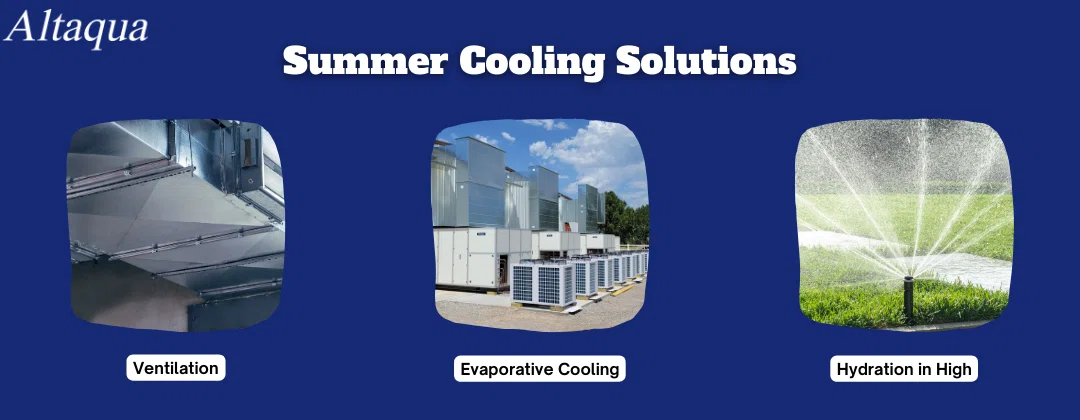
Greenhouse Modifications for Optimal Cooling
Exploring the intricacies of cooling greenhouses demands a thorough examination of strategic modifications, aiming to create a balanced, nourishing environment where plants can genuinely thrive. Refining each element within this space is crucial, as it directly impacts the cooling efficiency and overall well-being of plant life.
Utilizing Shade Cloth and Natural Tree Cover
Strategically employing shade cloth and natural tree cover is a refined approach to manipulating the sunlight entering the greenhouse. It goes beyond a simple blocking mechanism; it's a scientific endeavor to create a nurturing environment, optimizing light levels, and minimizing heat to promote healthy plant growth.
Implementing such protective measures aims to ensure a balanced exposure to sunlight, preventing any detrimental impacts of over-radiation while maintaining a conducive atmosphere for growth. The considered application of these elements aids in stabilizing internal conditions, fostering the flourishing of plants in a secure, balanced environment, and significantly impacting the overall cooling efficiency of the greenhouse.
Incorporating Wind and Airflow Systems
Integrating advanced wind and airflow systems is fundamental, acting as the life breath of the greenhouse, crucial for sustaining a dynamic, well-balanced environment. This integration isn't merely about ventilation; it's about ensuring continuous rejuvenation of the internal atmosphere, which is essential for plant vitality and growth.
Establishing a well-structured airflow system is pivotal, contributing to a lively and refreshing environment within the greenhouse and facilitating the constant renewal of air. This continuous flow is vital for maintaining a balanced atmosphere where plants can assimilate essential elements, enhancing their metabolic processes and ensuring optimal growth and development in the cooling greenhouse.
Role of Structural Design in Cooling Efficiency
Deliberate and precise structural design shapes a harmonious and efficient greenhouse. It isn't just constructing a structure; crafting a synchronized space where every component is harmoniously integrated to optimize cooling and maintain internal balance.
Within this framework, each structural element's intricate design and placement play an instrumental role in fostering optimal internal conditions. This meticulous approach to structural design and integration aids in sustaining a harmonious ecosystem within the greenhouse, providing an optimal, balanced environment for the diverse plant life to bloom, all while enhancing the overall cooling efficacy of the greenhouse.
A detailed exploration of these modifications underscores the importance and complexity of each intervention in creating a balanced and harmonious environment within cooling greenhouses. Whether it's the thoughtful placement of shade cloths, the refreshing design of airflow systems, or the precise structural adjustments, every element plays a crucial role in ensuring the thriving of plant life, highlighting the intricacies of maintaining optimal conditions in cooling greenhouses.
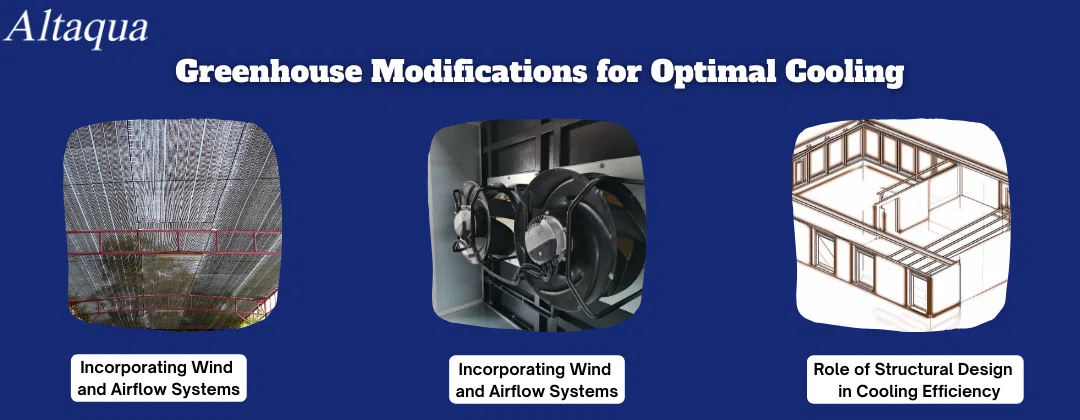
Plant-Based Strategies for Cooling
In optimizing cooling greenhouses, implementing plant-based strategies is critical. This method emphasizes plants' inherent attributes and behaviors to cultivate a sustainable and efficient environment, focusing on scientific principles and proven techniques to promote plant growth and health.
Strategic Plant Positioning and Watering
The optimization of plant positioning and precise watering schedules is essential. This process requires an understanding of each plant's specific needs and environmental preferences, aligning them in a way that maximizes their potential and contributes to cooling efficiency. The focus is to allow every plant the optimal amount of light and air, reducing competition and stress among them. Proper watering prevents overhydration and related complications, ensuring optimal growth conditions.
Each plant can absorb nutrients effectively in this balanced ecosystem, contributing to an overall healthier and cooler greenhouse environment. These efforts culminate in a meticulously balanced habitat where every plant experiences the conditions it needs to thrive.
Role of Companion Plants in Temperature Maintenance
Integrating companion plants can significantly contribute to maintaining temperature equilibrium within the greenhouse. This strategy revolves around fostering beneficial plant relationships, where each plant supports the other, aiding in temperature regulation and overall environmental stability. Companion plants can offer multiple benefits, including natural temperature modulation, pest deterrence, growth enhancement, and soil health improvement.
Understanding and utilizing these plant interactions are crucial for developing a balanced and productive greenhouse environment, where symbiotic relationships contribute to the overall cooling and well-being of the greenhouse.
The Interplay Between Plant Types and Cooling Needs
It is crucial to recognize the interaction between various plant types and their individual cooling needs. This involves understanding each plant type's specific requirements, attributes, and contributions to the greenhouse's overall cooling needs. Each plant's unique transpiration rate, leaf size, and growth pattern influence the greenhouse environment differently.
By strategically integrating a diverse range of plant types, greenhouse managers can achieve an optimized cooling effect and a harmonious environment conducive to the prosperity of each plant species. This various integration enhances the cooling efficiency and overall productivity of the greenhouse.
Investigating plant-based strategies provides valuable insights into achieving a balanced and efficient cooling greenhouse. The meticulous implementation of each system, from strategic plant positioning to integrating companion plants and understanding the specific needs of different plant types, is fundamental to fostering a harmonious environment. This approach underlines the importance of utilizing plants' inherent properties and synergies to cultivate a thriving, cool, and balanced greenhouse ecosystem, focusing on scientific knowledge and practical applicability.
Eco-Friendly and Cost-Effective Cooling Approaches
Navigating the terrain of eco-conscious and economical cooling mechanisms in greenhouses demands an integrated comprehension of innovative and responsible solutions. It is paramount to delve into sustainable practices which not only enhance cooling efficiency but also align with environmental conservation and resource optimization principles.
Solar-Powered Cooling Systems: A Sustainable Choice
Integrating solar-powered cooling systems in greenhouses is a transformative and rational initiative. It utilizes the abundant solar energy to modulate the internal environments effectively. The utilization of solar power is instrumental, acting as a clean, renewable energy source that diminishes reliance on non-renewable energy, reducing greenhouse gas emissions and the overall environmental footprint.
By incorporating solar technology, we can achieve meticulous temperature management, creating conducive growth conditions and ensuring energy conservation. It’s not just about leveraging technology; it’s about emphasizing our commitment to environmental preservation and sustaining the intricate balance of the greenhouse ecosystem.
Rainwater Harvesting for Cooling and Irrigation
Incorporating rainwater harvesting is a significant leap in eco-friendly greenhouse practices. This method enhances water efficiency by accumulating and utilizing rainwater for both cooling and irrigation, aiding in the conservation of water, reducing costs, and lessening dependence on external water sources.
It’s more than water conservation; it’s about creating a synergy with the natural environment, maintaining optimal moisture levels, and ensuring a consistent supply of water, crucial for plant health and productivity. This synergy reinforces the ecological stability within the greenhouse, underscoring the essence of environmental symbiosis in sustaining life.
Green Roof and Living Walls to Naturally Lower Temperatures
Employing green roofs and living walls is a strategic move to naturally moderate temperatures within the greenhouse. These living structures, adorned with flora, leverage the process of transpiration to cool the environment and offer added insulation, preventing heat influx and stabilizing internal temperatures.
These living installations not only serve as temperature moderators but also contribute to the enhancement of biodiversity and the overall ecological and aesthetic value of the greenhouse. It’s a manifestation of the symbiotic relationship between built environments and nature, promoting ecological equilibrium and unity.
Recycled Materials for Greenhouse Insulation
Incorporating recycled materials for greenhouse insulation is a pragmatic and eco-conscious approach. Using recycled insulating materials such as foam and cellulose curtails thermal transfer and maintains an optimal environment, highlighting the importance of resource conservation and ecological responsibility.
Opting for recycled materials underscores the essence of resource reclamation and environmental preservation, reducing waste and resource exploitation. It’s not merely an operational strategy; it’s a reflection of our commitment to amalgamating sustainability and efficiency in our cooling approaches, contributing to a more balanced and sustainable agricultural future.
The integration of eco-friendly and cost-effective cooling approaches is pivotal for the sustainability and efficiency of greenhouses. These strategies, ranging from renewable energy utilization to bio-integrated structures and recycled materials, are steps towards creating holistic and sustainable cooling solutions. They represent a mutual commitment to nurturing a balanced relationship between technological advancements and nature’s principles, ensuring a resilient and ecologically balanced future in agricultural endeavors.
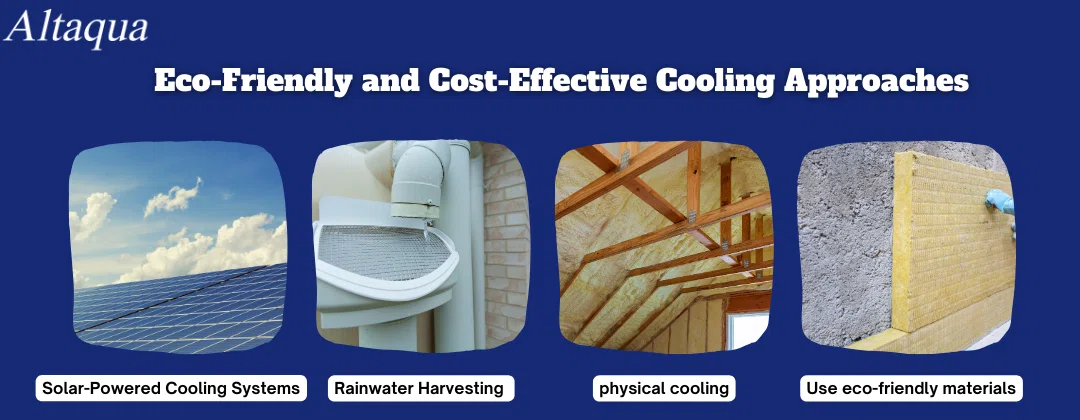
Technology and Greenhouse Cooling
In the integration of technology within greenhouse cooling processes, it is essential to identify solutions that are practical and effective, ensuring optimal plant growth and development. This involves the seamless combination of advanced tools and natural elements, which is critical in achieving a balanced and thriving cooling greenhouse environment.
Portable Air Conditioners and Automated Systems
Delving into portable air conditioners and automated systems, it’s clear that these technologies are indispensable for maintaining ideal temperature levels. Portable air conditioners offer the adaptability needed to address specific cooling requirements, allowing for meticulous temperature regulation and contributing to plant health.
Automated systems exemplify technological advancements by providing a consistent approach to environmental monitoring and modification. These innovations surpass the limitations of manual control, offering instantaneous data and automated adjustments to maintain a stable environment conducive to plant growth. The goal is to complement human intervention, optimizing conditions for each plant and maintaining the cooling greenhouse as a nurturing space for plant life.
Monitoring Tools for Temperature and Humidity
The utilization of monitoring tools is crucial in managing the intricate relationship between temperature and humidity, both essential elements for plant life processes. Accurate monitoring tools supply vital data that help detect environmental anomalies, enabling immediate corrective actions to be taken.
By accurately monitoring temperature and humidity, we can uphold an ecological balance where every component coexists in harmony, ensuring the well-being of each plant. The focus is not merely on data acquisition but on utilizing this information to foster an environment where plants can prosper, integrating technology to maintain equilibrium within the cooling greenhouse.
The incorporation of technology in greenhouse cooling aims to augment natural processes rather than dominate them. The use of portable air conditioners, automated systems, and precise monitoring tools epitomizes the synergy between technology and nature, aiming to create optimal conditions for plant development and growth. It signifies the creation of a harmonious environment where technology aids in realizing the full potential of the natural world within a cooling greenhouse, demonstrating the possibility of a balanced and symbiotic relationship between the technological and natural realms.
Integrating HVAC Systems for Enhanced Greenhouse Cooling
Incorporating HVAC systems has become foundational in creating improved and balanced cooling greenhouses. By combining diverse technologies, these systems contribute to a stabilized and controlled environment conducive to plant growth.
The Significance of HVAC in Modern Greenhouses
In today's greenhouses, HVAC systems are essential for maintaining temperature and humidity levels. By efficiently balancing these components, HVAC systems ensure that plants can flourish without disruptions from extreme conditions.
Transitioning to contemporary HVAC systems is about fostering a balanced habitat, seamlessly blending the advancements of technology with the essence of nature. This balance aids each plant in thriving in its unique rhythm, fully supported by technologically advanced solutions.
Introducing Altaqua Grow Room HVAC System
The Altaqua Grow Room HVAC System is tailor-made to sync with the natural rhythm of a greenhouse, effortlessly striking a balance between temperature and humidity. All you need to do is set your preferred temperature and humidity levels. The system then autonomously adjusts to ensure a nurturing environment for your plants.
Beyond just a piece of equipment, the Altaqua Grow Room HVAC System emerges as a genuine partner, championing each plant's growth and vitality, ensuring they thrive in a harmonious and supported ecosystem.
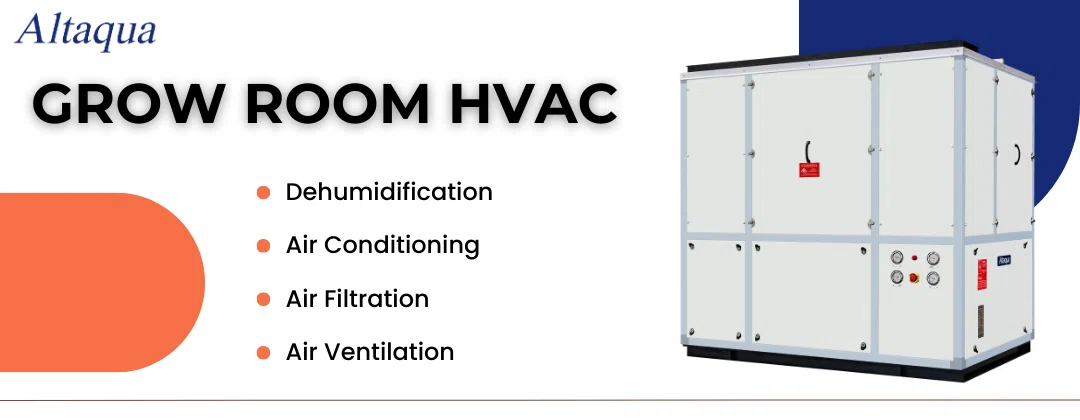
Benefits of Using Altaqua Grow Room HVAC System in Cannabis Greenhouses
Choosing the Altaqua Grow Room HVAC System can offer cannabis cultivators a reliable and precise means to create optimal growing conditions, vital for producing high-quality cannabis. The aim here is to manage temperature and humidity effectively and establish a harmonious environment, allowing every cannabis plant to flourish and, consequently, optimizing yield and quality.
The system is ducted and can disperse air uniformly throughout the expansive greenhouse space, ensuring each plant receives balanced environmental conditions regardless of its position. This feature indicates Altaqua's commitment to promoting uniform and harmonious growth conditions for each plant within the greenhouse.
The user-friendly installation process of the Altaqua Grow Room HVAC System is another advantage, removing unnecessary hassles and allowing growers to concentrate more on plant health and productivity. This ease of integration means that growers can swiftly adapt the system to meet the distinctive requirements of their greenhouses, sustaining optimal growing conditions with minimal manual adjustment.
In cannabis cultivation, the Altaqua Grow Room HVAC System represents a thoughtful approach to combining accuracy, simplicity, and efficiency. Utilizing such innovative solutions reflects a commitment to contemporary, sustainable cultivation methodologies, expanding the possibilities in cannabis growth and quality. It's not merely about implementing advanced technology; it's about refining each element of the growth atmosphere, initiating a phase where each plant is accorded an environment to thrive and express its inherent qualities to the fullest.
Enhancing Plant Growth and Cooling Efficiency with Altaqua Grow Room HVAC System
The Altaqua Grow Room HVAC System accentuates plant growth and uplifts cooling efficiency in the greenhouse. Operating with natural processes, this system forms an eco-conscious cooling greenhouse environment where every plant's life force is treasured and cultivated.
By integrating the Altaqua Grow Room HVAC System, we celebrate the essence of each plant. This integration symbolizes the harmonious coexistence of cutting-edge technology and the intrinsic grace of the natural world, offering a glimpse into a future where both seamlessly coexist.
The union of technology, especially HVAC systems like the Altaqua Grow Room HVAC System, with natural greenhouse processes signals the advancements in contemporary cultivation methods. It's about fostering a realm where technology walks hand in hand with nature, recognizing the innate vibrancy of each plant and contributing to a thriving, balanced ecosystem. This alignment embodies a future where technology and nature can prosper together, each amplifying the other's strengths in a consistent rhythm of growth and progression.
Expert Recommendations
Advancing from our previous discussions, it is pivotal to consider the insights and recommendations of experts who have delved into the intricate interplay of nature and technology, aiming to optimize cooling in greenhouses.
Future Trends in Greenhouse Cooling
As we navigate into the future of greenhouse cooling, a clear inclination towards sustainability coupled with technological innovation becomes evident. The convergence of ecological mindfulness and advanced technology is not merely a vision but is steadily becoming an essential paradigm. The quest is to foster an environment where technological interventions harmonize with the natural ethos, enhancing the well-being of the plants and promoting ecological balance.
In this journey, the emphasis is on devising solutions that are adaptive and resonate with the intrinsic rhythms of nature, thereby facilitating the cultivation of flora in its true essence. The exploration for more refined and environmentally congenial solutions will continue to evolve, shaping methods that are in tandem with the diverse and dynamic needs of the botanical world. The integration of these future trends is not just about addressing immediate needs but is about forging a path that is in sync with the evolving tapestry of life and environment.
Expert Tips for Maximizing Cooling Efficiency
Navigating through the aspects of greenhouse cooling, it becomes imperative to synthesize expert advice to enhance our practices. The experts underscore the amalgamation of efficacious and sustainable measures, synthesized with an intricate understanding of the varied requirements of diverse flora.
- Attune to the Plants: Recognize and resonate with the unique behavioral patterns of the plants, ensuring their diverse needs are addressed with precision and care.
- Harmonize with Nature: Align the cooling strategies with the innate rhythms of the environment, establishing a balanced synchronization between the implemented solutions and the natural ecosystem.
- Streamline Energy Consumption: Continually scrutinize and refine the cooling systems, aiming for optimal energy utilization and sustainability in every operational aspect.
- Incorporate Innovation: Adapt to the evolving technological landscape, incorporating advancements that are in sync with the dynamic needs of the plants and the ecological equilibrium.
Conclusion
Embarking on the journey to unveil the nuances of cooling greenhouse has been enlightening, offering a harmonious blend of nature’s essence and cutting-edge technology. The diverse and intricate strategies, ranging from the advanced Altaqua Grow Room HVAC System to eco-friendly modifications and plant-based approaches, all pivot around the central theme of maintaining optimal temperatures and ensuring the well-being of each leaf and bud within the greenhouse. This exploration has accentuated the significance of synergizing natural elements with technological innovations to create a balanced and thriving environment, emphasizing the core essence of cooling greenhouse.
In conclusion, our comprehensive delve into the myriad of cooling solutions has highlighted the paramount importance of integrating technological advancements with ecological considerations, emphasizing the role of cooling in fostering a conducive environment for plant growth and metabolism. It’s not merely about controlling temperature but about orchestrating a symphony of elements that resonate with the inherent rhythms of plant life. Let us continue to embrace the evolving trends and innovations in greenhouse cooling, to nurture spaces where every plant can thrive in its natural rhythm, contributing to a future where technology and nature coexist in perfect harmony.
FAQ
1. Why is maintaining a cool greenhouse crucial for plant health?
Maintaining a cool greenhouse is pivotal as it safeguards the plants from extreme temperatures, ensuring their robust growth and well-being. A well-regulated environment fosters healthy plant metabolism and development, prevents heat stress, and promotes optimal yield and quality.
2. How can one achieve optimal temperatures inside a greenhouse?
Achieving optimal temperatures involves a blend of advanced cooling solutions, proper ventilation, strategic plant positioning, and thoughtful design. Employing shade cloth, maximizing natural ventilation, and leveraging plant-based strategies can also help maintain the desired temperature and humidity levels within the greenhouse.
3. What role does ventilation play in greenhouse temperature regulation?
Ventilation is a critical component in regulating greenhouse temperature. It facilitates air circulation, expelling hot, stale air and introducing fresh, cool air, thus maintaining a balanced and conducive environment for plant growth. Proper ventilation also aids in controlling humidity levels, preventing the onset of plant diseases.
4. How do external factors influence greenhouse temperatures, and how can these be mitigated?
External factors like weather conditions, sunlight, and external temperature play a significant role in determining greenhouse temperatures. Mitigation strategies include using shade cloths, proper insulation, green roofs, and strategic structural design to shield plants from extreme conditions and ensure a stable internal environment.
5. What are some advanced cooling solutions for managing high temperatures during summer?
To manage high temperatures, integrating advanced cooling solutions like evaporative cooling systems, advanced HVAC systems, and automated temperature and humidity monitoring tools is crucial. These solutions help maintain optimal environmental conditions, ensure plant health, and maximize yield during the summer months.
Share with your friends:
Popular Blogs on Altaqua:
Get HVAC Brochure?
Get HVAC Brochure?
